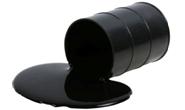Steel Products Prices North America

Oil Industry Woes Continue to Plague Steel Industry
Written by Sandy Williams
October 22, 2015
Steel earnings calls began this last week and all of them reference the downturn in the oil industry and its effect on production. Low oil prices, overcapacity, and resulting weak demand for OCTG products continues to force firms to adjust output and workforce.
Vallourec Star Steel announced this week that it will begin a third round of layoffs for the year. In February the company was idled for three week. In July, 80 workers were laid off reducing the workforce to around 400. The number of employees to be affected this time has not yet been determined.
“While we have already taken substantial measures throughout the year, market conditions have not improved,” Vallourec Star president Judson Wallace said in a statement announcing the current cuts. “The prolonged downturn continues to impact business. This extremely difficult decision is necessary for us to remain competitive in a very challenging environment,” he added.
Tenaris Algoma Tubes announced 230 workers will be laid off effective October 30, lasting until at least November 23 when employees will be recalled based on seniority.
In February, 90 workers were temporarily laid off and in March the company cut another 240. Most of the 240 worker have been recalled. Spokesperson Megan Parlowe was unsure how many employees are currently at the plant but said the number “will fluctuate to address current demand levels
“We can’t speculate on when everything’s going to come back to normal, because the price of oil is a very large critical piece, as well as the increasing amount of unfairly priced imports as we’ve been saying for the past few months,” said Parlowe.
Back in March 2015, Forbes tallied the layoffs in the oil industry. At that time, Forbes determined 58,586 layoffs in the oilfield services, mostly in the U.S., and over 7,000 at OCTG manufacturing companies like Atlas Tube, Evraz, Timkin Steel, Tenaris, US Steel, Vallourec Star, and others. Some companies were forced into bankruptcy such as Missouri-based Boomerang Tube.
Unfortunately, the outlook for the oil and gas industry has not improved. In the last month, Halliburton, the second largest oilfield services operation in North American, cut another 2,000 jobs. The company announced in September it would “flatten” its North American business by reducing management and “additional headcount commensurate with market activity levels.” In the past year Halliburton has cut its workforce by 18,000 people, or 21 percent.
Schlumberger, the number one oil services provider, predicts that it will be 2017 before the oil industry recovers.
“The market is underestimating how long this period is going to take,” said Schlumberger CEO Paal Kibsgaard in the third quarter earnings call. The company reported a 49 percent drop in profits for third-quarter 2015.
Houston based oil field servicer Baker Hughes cut 3000 more jobs in third quarter bringing the total this year to 16,000 worldwide. The firm posted a net loss of $159 million compared to net income of $369 million in Q3 2014. Baker Hughes is scheduled for acquisition by Halliburton.
In its earnings report, Reliance Steel said it expects the energy industry to remain under pressure throughout 2015 and into 2016.
Nucor CEO John Ferriola was able to give a slightly positive spin to the oil industry crisis by suggesting that with low oil prices resulting in savings at the gas pump, perhaps it would be a good time to add a tax to gasoline to pay for repair of the nation’s crumbling infrastructure.

Sandy Williams
Read more from Sandy WilliamsLatest in Steel Products Prices North America

Nucor slows HRC price climb with $5/ton increase
After eight weeks of double-digit price increases on hot-rolled (HR) coil, Nucor slowed the price rise this week with an increase of $5 per short ton.

Domestic CRC prices surge ahead of imports
The price spread between stateside-produced CR and imports reached its widest margin in over a year.

Evraz raises plate prices $160/ton
Evraz North America (NA) has followed Nucor and SSAB with a plate price increase of its own: up $160 per short ton (st). The increase was effective immediately for all new orders of carbon, high-strength low-alloy, and normalized and quenched-and-tempered plate products, as well as for hot-rolled coil, the steelmaker said in a letter to […]

Nucor lifts HR coil to $820/ton
Nucor has increased its consumer spot price (CSP) for hot-rolled (HR) coil for a fourth consecutive week.

Nucor pushes HR spot price to $790/ton
Nucor increased its consumer spot price (CSP) for hot-rolled (HR) coil to $790 per short ton (st) on Monday, Feb. 10 – a $15/st bump vs. last week. The Charlotte, N.C.-based company has raised its weekly CSP by $40/st over the past three weeks after maintaining tags at $750/st since Nov. 12, according to SMU’s […]
